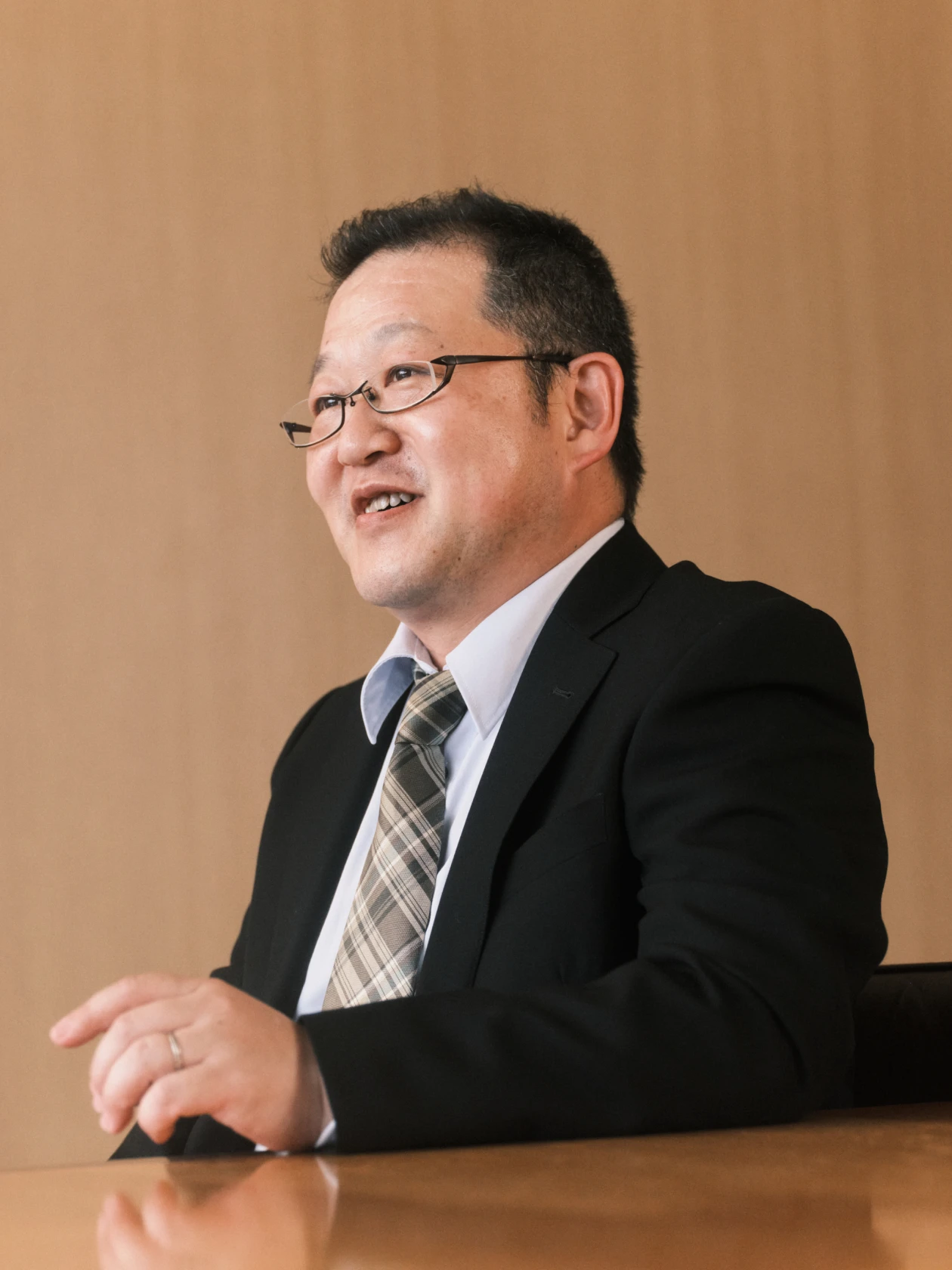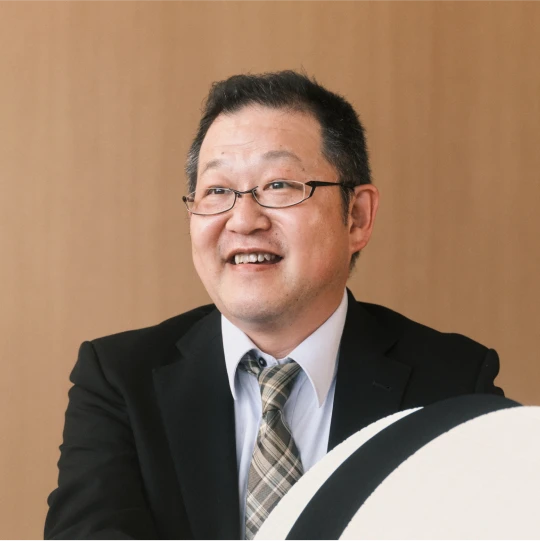
- TOP
- NITTA DuPont’s Technologies and People
- H.K. / Expert, CMP Field Application Engineering Section Field Application Engineering Department, Sales Division

A customer-driven approach in which we always put ourselves in our customers’ shoes
Field Application Engineering Department, Sales Division

I used to work in the semiconductor division of an electrical machinery manufacturer, in a department that was in charge of chemical mechanical polishing (CMP) process technologies and transistor core manufacturing processes. I had become primarily involved in management and advisory work, which took me away from the actual field. I didn’t feel like my skills were being used to their fullest, so when NITTA DuPont created its application team, I joined the company. At the time, NITTA DuPont was a polishing pad and polishing slurry manufacturer but it didn’t have any CMP process specialists, so it created a team of CMP specialist engineers, in part to provide customers with higher levels of satisfaction. Because of that background, the majority of my department consisted of people who formerly worked for semiconductor device manufacturers.
From the very start, we gradually established a system that served as a technical translator between customers and the rest of our company, ensuring that customer requests were understood by our specialists and that we could provide accurate proposals in response to those requests. We use the same CMP equipment as customers, perform actual polishing of semiconductor wafers and evaluate that polishing, and use our findings to create viable proposals. This is the technical service that our department provides. We were created out of our company’s customer-driven approach to do this.

We use a customer assignment system in which an application engineer is assigned to almost every customer. For larger customers, we assign two engineers to assist in dealing with customer issues and issuing proposals. I’m primarily responsible for four customers and seven sites, but I’m involved in many more if one includes irregularly scheduled technical consultations.
Customers are extremely focused on the viability--that is, the precision--of proposals. This is because evaluations of CMP on semiconductor components and materials are extremely costly and time-consuming for customers. Needless to say, our customers therefore have an overall heightened awareness of costs, and when they are considering proposals, before the evaluation and verification stage, they are extremely circumspect, as one could readily imagine. To meet the needs of customers like these, it is important to issue highly viable proposals.

Actual wafer polishing tests are performed in clean rooms, all the way through the measurement process. Sometimes we acquire data upon requests from customers, but we also sometimes perform evaluations using our own products as benchmarks. We also develop processing technologies, such as coming up with ideas for processes that could improve results. We investigate and verify these ideas and employ them in our proposals. We start by coming up with proposals, using them to create experimental sequence tables called run sheets, estimating what components and materials will be needed, and placing orders for those components and materials. Once they are ready, we bring them into a clean room and perform testing. That accounts for around 30% of our operations. The remaining 70% is work done off the company grounds.
Polishing testing is done under a variety of conditions. For example, these include pressure, rotation speed, and polishing slurry flow. We also keep a close eye to observe polishing behavior. For example, to observe reductions in pad steps, we will sometimes stop polishing midway and measure pads with a profilometer. We repeat testing for as long as time permits, and in some cases we’ve done 20-some runs with 4 polishing pads in the course of a single day. Our main objective isn’t testing polishing but thinking about what kind of testing could be used to perform verification and how we can acquire complete information that customers feel they can trust. The most vital part is then having customers perform evaluation on the actual equipment at their sites and reproduce our results.
One of the most unique episodes involving a customer was an interaction I had with an engineer from one particular memory manufacturer. The first thing they said, right out of the gates, was "We want to fight NITTA DuPont through data." For roughly the next six months, we collected and reported data to each other in a short cycle of roughly two weeks. Specifically, we performed testing for a week, gathered and organized the data, reported it, and then decided on what to test next. We just kept repeating this sequence. It really was like fighting with data, or tossing data back and forth. Then, when a major project was launched the following year, that data proved enormously useful. It contributed to us being able to maintain an extremely large share and increase our net sales.

NITTA DuPont’s customer-driven approach takes the positions of customers into consideration, promoting activities that maximize customer benefits and profits. My department ensures viability and reproduces proposals so that customers are always happy with us, and are never left disappointed. We also use the same terminology and units as customers. Seeing first-hand how cultures differ from customer to customer, I started thinking about what they would think if they were presented with data using different units. As can be easily imagined, presenting customers with proposal materials that use the same units as the customers results in a higher level of customer satisfaction.
We will strive to continue to provide customers with high quality proposals. Having fresh information is an extremely important part of achieving that. Fresh information is information provided by the customer, but disclosing information is risky, which makes this a difficult challenge. It is vital that we earn the trust of our customers so that they will feel that the benefits of providing us with fresh information outweigh the risks. This needs to go beyond simply becoming well-acquainted or getting along. They need to see us as technical consultation partners. The data I provide will become part of proposal materials, but it also reflects our stance. I want our customers to see this data as important reference information, and for us to keep supplying customers with proposals they can trust. Through this, we will establish relationships of trust with our customers that lead them to provide us with data of their own accord, which we can use to be even more customer-driven.

NITTA DuPont
Even if we have the world’s top market share for polishing pads--even if people say we have the world’s top level of technology--we’re still only halfway there. We still have a lot of room for improvement. There are still a lot of places where we could do even better, but I see that as one of our assets. If we were perfect, there would be no room for further growth. The future still lies ahead for NITTA DuPont.
In that journey, “People Management” within our company is growing even more important. The core value of our parent company, “Respect for People,” is simple but it will be even more critical in the future. It will assist in the smooth operation of our company as we grow further. If staff members respect each other, whether or not they know each other personally, this will improve their self-esteem and motivate them, invigorating our company.

